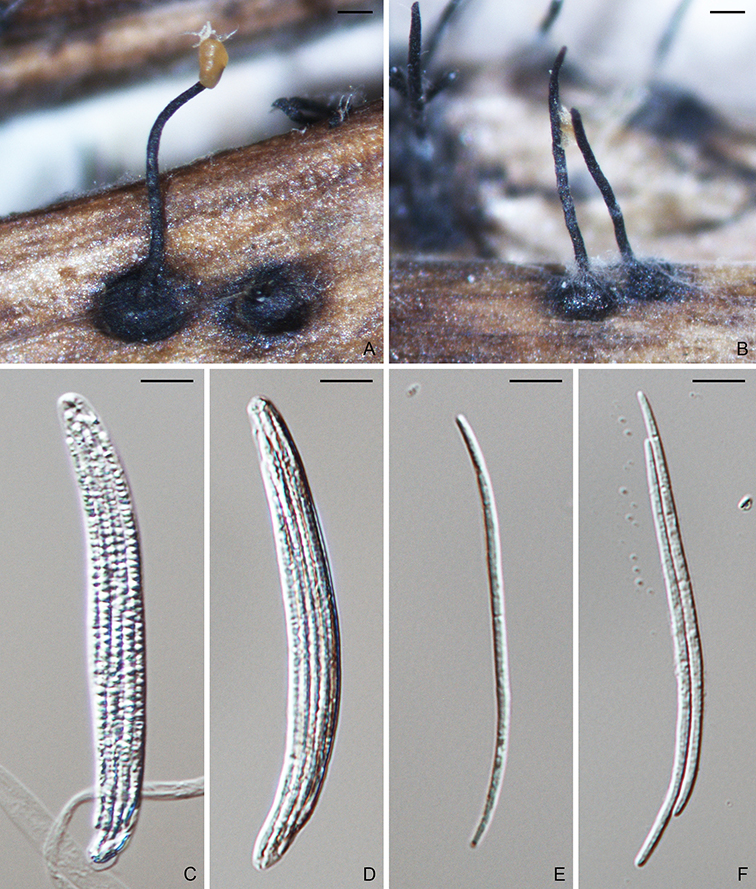
Figure. Ophioceras commune (ILLS57430). A–B. Ascomata. C–D. Asci. E–F. Ascospores. Scale bars: A–B = 200 µm; C–F = 10 µm.
Ophioceras commune Shearer, J.L. Crane & W. Chen, Mycologia 91(1): 146 (1999).
MycoBank: MB450197.
Ascomata perithecial, submerged to superficial, solitary to gregarious, globose to subglobose, black, 250–400 µm diam, with a cylindrical, dark brown to black, hairy neck, 500–1500 × 30–100 µm. Paraphyses unbranched, septate, hyaline. Asci 8-spored, unitunicate, clavate, 70–120 × 5–12 µm, with a refractive ring. Ascospores parallel in ascus, filiform to fusiform, slightly curved, 3–7-septate, not constricted at septum, hyaline to light brown, smooth, 75–110 × 1.5–2.5 µm. Asexual state unknown.
Typification: Holotype ILLS57431. Isotype ILLS57430. Paratype ILLS57429.
Gene sequences: JX134661 (18S), JX134675 (ITS), JX134687 (28S), JX134715 (MCM7), JX134729 (RPB1), JX134701 (TEF1).
Genome sequences: SRX798630 (transcriptome).
Specimens examined: Panama, Barro Colorado Island, Allee Creek, from a submerged twig, 15 Apr 1983, C.K. Augspurger, CS-408-2 (ILLS57431, ILLS57430). USA, Indiana, Owen, McCormicks Creek, on submerged herbaceous debris, 27 Aug 1988, C.A. Shearer, CS-835-1 (ILLS57429).
Hosts/substrates: On submerged twigs and herbaceous debris.
Distribution: China, Costa Rica (Barro Colorado Island), Panama, USA (Indiana), Venezuela.
Copyright 2022 by The American Phytopathological Society. Reproduced, by permission, from Luo, J., and Zhang, N. 2022. The Rice Blast Fungus and Allied Species: A Monograph of the Fungal Order Magnaporthales (https://my.apsnet.org/APSStore/Product-Detail.aspx?WebsiteKey=2661527A-8D44-496C-A730-8CFEB6239BE7&iProductCode=46826). American Phytopathological Society, St. Paul, MN.